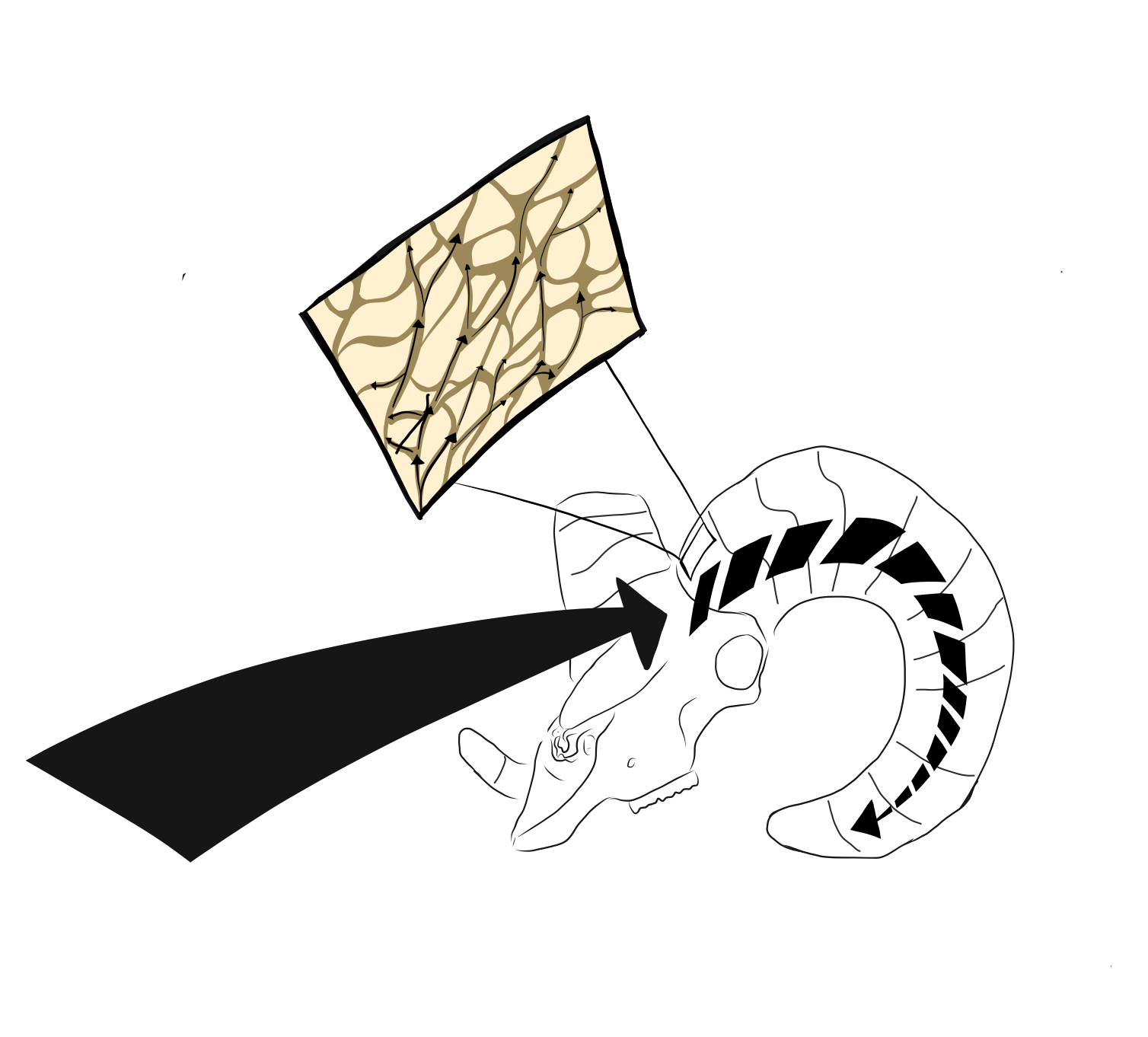Ram! Bam! No thank you ma’am!
The horns of bighorn sheep rams are impressive structures: they must be strong enough to win fights that can last multiple hours, protect their brain during collisions where one male is hurling himself at another male at a rate of 30 feet per second, and be light enough to maneuver throughout their daily lives. The configuration of the horn and the materials they are made of allow forceful, sustained impact without damaging the brain or breaking the horns. First, the curl of the horn helps to transfer the force from the collision that would otherwise go straight to the brain along the length of the curl. Additionally, the boney core that serves as the basis of the horns is made up of a honeycomb-like structure that can bend slightly, which helps to dissipate the energy from the collision. Knowing how bighorn sheep deal with this complex challenge is helpful for a variety of applications in the human world, such as building helmets that can safely resist collisions. We don’t recommend that you wear helmets and pretend to fight like bighorn sheep males; but if you do, please send us pictures.
Reference: Drake et al. 2016. Horn and horn core trabecular bone of bighorn sheep rams absorbs impact energy and reduces brain cavity accelerations during high impact ramming of the skull. Acta Biomaterialia 44:41-50.
Description and illustration by Rhiannon Jakopak.

